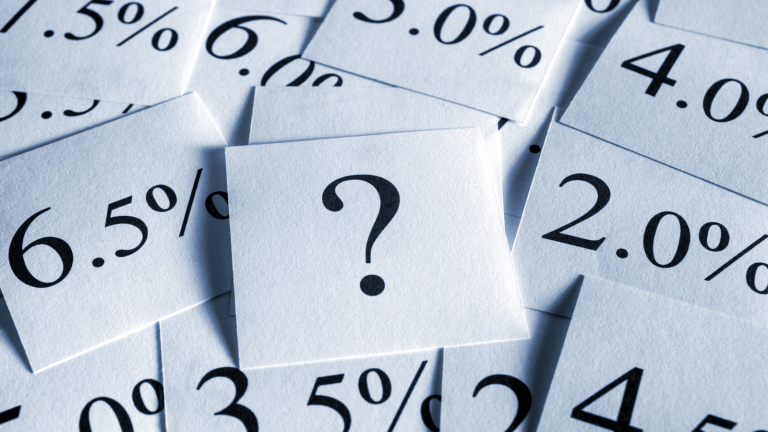Will the Federal Reserve raise interest rates later today at the conclusion of its latest policy meeting? Not according to futures traders.
The futures market has priced in a 99% chance that the U.S. central bank will leave its trendsetting Fed Funds Rate unchanged at its current target range of 5.25% to 5.50% at the conclusion of today’s meeting. In fact, futures traders don’t expect the Fed to make any changes to interest rates for the next 10 months, meaning that interest rates may have now peaked.
The next move on interest rates is widely expected to be a cut on the part of the Fed. This would be good news for stocks as the market has been looking for signs that rates will start coming down.
Jerome Powell in the Spotlight
As always, how markets react to the interest rate decision will depend on the comments made by the Fed in its accompanying press release and by Fed Chair Jerome Powell during a news conference with the media. Expectations are that Powell will continue to talk tough and warn of future rate hikes if needed, even as the central bank continues to hold rates steady. On Wall Street, this is being called a “hawkish hold” on the part of the Fed.
During its last meeting in August, Powell emphasized that another interest rate hike in the U.S. might be needed to bring inflation back down to the central bank’s 2% annualized target. However, traders and economists seem to doubt that further rate hikes will be needed, at least in the near term. A recent poll of economists by Reuters found that only 20% expect another interest rate increase before the end of this year. The Fed Funds Rate is currently sitting at a 22-year high.
Complicating Factors
Where inflation and interest rates go after today’s announcement gets more complicated. This is largely due to rapidly rising energy prices, which have a big impact on inflation. Since the end of June, crude oil prices have increased 25% and risen above $90 a barrel, the highest level in nearly a year. This means consumers are once again paying more for gasoline at the pump. This fact will show up in future inflation reports, which could make the headline numbers look unsettling.
While the Fed does remove energy prices and look more closely at a core reading of inflation, there are some other trouble spots that central bank officials will need to consider when making future rate decisions. These include rent costs, interest charged on home mortgages, and grocery prices, which are another volatile sector that is removed from core readings of inflation. The
U.S. inflation rate came in at an annualized 3.7% for August of this year, down from a peak of 9.1% reached in June 2022.
What’s Next
Markets will be looking for some clear direction from the Fed and Chair Powell in today’s interest rate announcement. Stocks continue to be sluggish in September, with the benchmark S&P 500 index closing below its 50-day moving average for three consecutive days in the lead-up to today’s rate decision. Any signs that interest rates could be put on an indefinite hold, and stocks can be expected to break out of their current funk and rally.
On the date of publication, Joel Baglole did not have (either directly or indirectly) any positions in the securities mentioned in this article. The opinions expressed in this article are those of the writer, subject to the InvestorPlace.com Publishing Guidelines.

